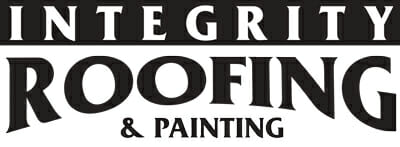When selecting the perfect roofing material for your home, Integrity Roofing and Painting brings decades of experience and expertise. Our specialization in synthetic cedar roofing allows us to guide homeowners through the comparison of cedar roofs, helping them understand the key differences between synthetic and natural cedar roofs. In this detailed guide, we’ll explore the advantages and limitations of each choice to assist you in making a well-informed decision.
What is a Natural Cedar Roof?
Natural cedar roofing involves using real cedar wood, such as Western Red Cedar or Alaskan Yellow Cedar. Cedar has been a favored roofing material for its beauty, durability, and insulating properties. Its classic appeal makes it a popular choice for many homeowners seeking a traditional and timeless look.
Pros of Natural Cedar Roofs:
- Aesthetic Appeal:
Natural cedar provides a distinctive, rustic charm with its warm tones and rich texture. When first installed, cedar shingles showcase a golden hue that evolves into a silvery gray over time, giving a unique and weathered appearance that many homeowners find attractive. - Natural Insulation:
Cedar’s natural insulation properties help regulate indoor temperatures, keeping homes cooler in summer and warmer in winter. This can contribute to lower energy bills over time. - Eco-Friendly:
Cedar is a renewable resource, making it an environmentally friendly choice when sourced responsibly. It also biodegrades naturally, reducing long-term waste. - Weather Resistance:
Cedar wood contains natural oils that help protect against insects, decay, and moisture, making it a resilient choice for various weather conditions.
Cons of Natural Cedar Roofs:
- Maintenance:
Natural cedar requires regular maintenance to preserve its appearance and durability. Cedar shingles can deteriorate faster without proper care, leading to increased maintenance costs. - Cost:
The initial cost of natural cedar roofing can be high, and ongoing maintenance expenses can add up over time. The long-term investment must be weighed against these costs. - Fire Risk:
Untreated natural cedar poses a fire risk. While fire-resistant treatments can mitigate this risk, they can increase overall costs.
What is a Synthetic Cedar Roof?
Synthetic cedar roofing replicates the appearance of natural cedar but is crafted from advanced composite or polymer materials. Designed to offer the same aesthetic appeal as real wood, synthetic cedar comes with enhanced durability and reduced maintenance requirements.
Pros of Synthetic Cedar Roofs:
- Durability:
Synthetic cedar is engineered to withstand extreme weather conditions, including heavy rain, strong winds, and hail. It resists cracking and warping, making it a durable choice for long-term performance. - Low Maintenance:
Unlike natural cedar, synthetic cedar requires minimal upkeep. It resists mold, mildew, insects, and algae, reducing the need for frequent treatments and inspections. - Fire Resistance:
Many synthetic cedar products meet high fire resistance standards, offering superior protection compared to untreated natural cedar. - Longer Lifespan:
Synthetic cedar roofs typically last 50 years or more with minimal maintenance, whereas natural cedar roofs may last 20 to 30 years with proper care. - Uniform Appearance:
Synthetic cedar shingles maintain a consistent look throughout their . They don’t age unevenly like natural cedar, providing a polished, cohesive appearance. - Eco-Friendly:
Many synthetic cedar products are made from recycled materials, contributing to sustainability. Their longer lifespan also reduces the frequency of replacements, minimizing environmental impact.
Cons of Synthetic Cedar Roofs:
- Upfront Cost:
Synthetic cedar may have a higher initial cost compared to natural cedar. However, the lower maintenance requirements and extended lifespan often make it a more cost-effective option in the long run. - Lack of Natural Aging:
Synthetic cedar does not develop the weathered patina that natural cedar does. If you’re drawn to the evolving look of real wood, synthetic cedar may not offer the same aesthetic.
Cedar Roof Comparison: Why Synthetic Cedar is the Superior Choice
In this cedar roof comparison, it’s clear that synthetic cedar roofing often outshines natural cedar in several key areas:
- Durability:
Synthetic cedar roofs are designed to endure harsh weather conditions and resist damage, providing a more robust solution than natural cedar. - Maintenance:
With minimal upkeep required, synthetic cedar roofs save homeowners time and money. The reduced need for regular treatments and repairs makes it a hassle-free choice. - Aesthetic Appeal:
While natural cedar offers a charming, weathered look, synthetic cedar provides a consistent and refined appearance that maintains its beauty over time. - Cost Efficiency:
Although synthetic cedar may have a higher upfront cost, its longevity and low maintenance requirements offer significant long-term savings. - Fire Resistance:
Synthetic cedar provides superior fire resistance, enhancing safety compared to natural cedar.
Why Choose Synthetic Cedar Roofing?
At Integrity Roofing and Painting, we specialize in Synthetic Cedar Roofing, and we’re excited to share why this modern solution is often the best choice for your home. With its exceptional durability, low maintenance, and lasting beauty, synthetic cedar roofing delivers a practical and stylish alternative to natural cedar.
Choosing synthetic cedar means investing in a roof with aesthetic appeal and practical benefits. Synthetic cedar is a top contender for a roofing solution that stands the test of time, reduces maintenance costs, and enhances your home’s appearance.
Ready to explore the advantages of synthetic cedar roofing? Contact us today to schedule a free consultation and inspection. Our expert team is here to help you make an informed decision and ensure your roofing investment is a wise one.

